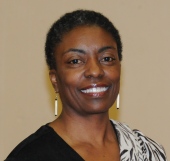Emory University, Manuscript, Archives, and Rare Book Library: Velma Fann (Essay)
 I often search an archive, requesting something that “looks interesting.” Several years ago, I came across one such collection at MARBL. It was the Alice Roberta Parks Ellison Papers, 1934-1960. I wanted to know what Mrs. Ellison’s relationship was to Emory and why she would leave a collection on black life in Atlanta to a white university, even if that university was my alma mater.
I often search an archive, requesting something that “looks interesting.” Several years ago, I came across one such collection at MARBL. It was the Alice Roberta Parks Ellison Papers, 1934-1960. I wanted to know what Mrs. Ellison’s relationship was to Emory and why she would leave a collection on black life in Atlanta to a white university, even if that university was my alma mater.
Hers was a personal collection—newspaper clippings of African-American social clubs, church programs, scrapbooks, and such dating from the 1930s. Among the clippings were articles, circa 1946, from the Atlanta Journal or perhaps the Constitution. They focused on the integration of the West End community in Southwest Atlanta, a community I have lived in for nearly 30 years. The clippings rendered me silent. One headline read: “Group to Rebuy Negro Property Seeks Charter.” It meant what it said. To keep Negroes out of the West End, whites would buy back homes from Negroes who had moved there.
I recently shared a copy of the clippings with young adults at my church in the West End. They are preparing to perform Lorraine Hansberry’s seminal play “A Raisin in the Sun.” It is the story of an African-American family in Chicago who receives a $10,000 check—the life insurance policy of the family patriarch. The matriarch decides to purchase a home in an all white Chicago community. Once the white community sees their new neighbors, they send a representative from the Clybourne Park Improvement Association to make them a generous offer: they will purchase the home from the family at a substantial profit to them. Reading the script and reflecting upon the newspaper clipping made this piece of history all the more real. The young adults shook their heads. They have never experienced such overt racism; hopefully they never will.
I never learned Mrs. Ellison’s connection to Emory, but I felt a connection to her. We both chose Emory and the West End—perhaps for different reasons, perhaps for the same. The newspaper clippings that she thought important enough to preserve have had an impact not only on me, but on a group of young men and women 65 years later. They are the beneficiaries of the Civil Rights Movement. Because of the clippings, these young adults can better understand the Movement and the lessons in “A Raisin in the Sun.”
Velma Fann